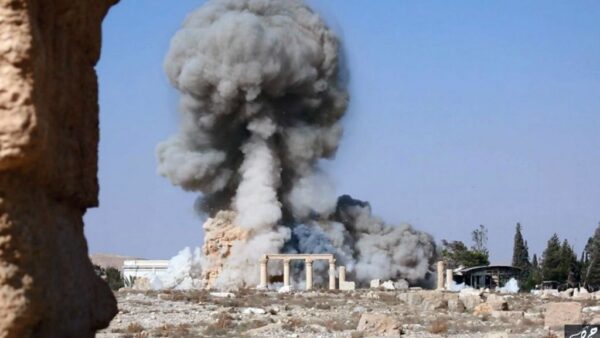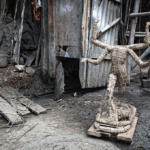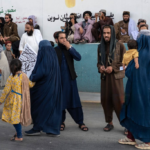The world has witnessed numerous conflicts throughout history, often resulting in significant damage to its rich cultural heritage. The impact of these conflicts on cultural sites is multifaceted and far-reaching, with both intentional destruction and accidental damage occurring due to the chaos and instability that accompanies war. The preservation of these cultural sites faces significant challenges, especially in regions plagued by conflict. This blog explores the threats to cultural heritage sites in times of conflict and briefly discusses efforts to preserve them. Protecting cultural treasures, especially during times of conflict, is not merely a regional concern but a global imperative.
Threats to cultural heritage sites in conflict zones often include what scholars refer to as intentional destruction, the deliberate targeting of cultural sites, such as religious structures, historical monuments, and museums, this destruction can be motivated by political, religious, or ideological beliefs(1). The most pervasive example in Africa is Archaeological looting. Archaeological looting in Africa due to conflict and war represents a tragic intersection of history, cultural heritage, and contemporary turmoil, It is a scourge that not only robs nations of their past but also perpetuates instability and contributes to a cycle of violence and exploitation(2).

In regions affected by conflict, such as Sudan, Libya, and Mali, archaeological sites often become collateral damage or deliberate targets. For example, the destruction of mosques and mausoleums in Timbuktu, Mali, by rebel Islamist groups in 2012, highlights the devastating impact of intentional destruction(3). The Syrian civil war has led to extensive looting and damage at several archaeological sites. For instance, the ancient city of Apamea has been looted and damaged, with satellite imagery showing the extent of the destruction. Similarly, Dura-Europos, a site with a rich history of various cultures and religions, has been severely damaged, with 70% of the site ruined due to looting(4)(5).
Looters frequently target ancient tombs and historic sites, plundering artifacts that are then sold on the black market. This trade not only strips countries of their cultural patrimony but also erases vital historical records that contribute to our understanding of human civilization. When artifacts are removed from their original context, the historical and cultural significance they hold is lost. This can make it difficult to understand the artifacts’ meaning and importance in ancient cultures(6). The looting of the Nok terracotta sculptures in Nigeria, has deprived scholars of key insights into early African societies(7). The theft of cultural artifacts can also be a form of cultural appropriation, stripping a nation of its cultural identity and heritage. This can have significant emotional and psychological impacts on the people who are connected to these artifacts (8)(9).
The consequences of archaeological looting extend beyond the loss of artifacts. They erode national identities, hinder reconciliation efforts post-conflict, and perpetuate economic disparities as stolen treasures often end up in private collections abroad or on the black market(10).
The ongoing war in the Gaza Strip has led to devastating destruction of Palestinian archaeological sites, cultural buildings, and historical monuments. Among the casualties of this violence is Gaza City’s Central Archive Building, a repository of over 150 years of historical documents that bore witness to the evolution of Gaza and its people. Reduced to rubble by relentless shelling, this archive held irreplaceable records crucial for understanding Gaza’s past and charting its future(11).Similarly, the Rashad al-Shawwa Historical Cultural Centre, an invaluable cultural hub, now stands as a mere shadow of its former self, its library of 20,000 books and theater space devastated by the indiscriminate bombings(12)
Religious and archaeological sites, which serve as repositories of faith and history, have also suffered grievous blows. The Great Omari Mosque, a venerable symbol of Palestinian heritage dating back centuries, now stands largely destroyed, its ancient minaret defiantly standing amidst the ruins(13).
The wanton destruction of these sites and cultural institutions represents not just an assault on physical structures, but on the collective memory and identity of the Palestinian people. Each site held stories, artifacts, and memories that linked generations to their past, offering a tangible connection to a shared history that transcended borders and conflicts.
Addressing this crisis demands urgent and concerted efforts from the global and local neighboring communities. What can be done? What should be done? These questions, while difficult, compel us to consider innovative approaches and unwavering commitment to safeguarding our collective heritage.

The UNESCO World Heritage List recognizes and protects cultural and natural sites of outstanding universal value. Many African sites are inscribed on this list, providing a framework for their conservation and management. However, the list also highlights the challenges faced by these sites, as 17 out of 39 sites on the Danger List are located in Africa(14)(15).
Empowering local communities and heritage professionals with training in conservation, site management, and emergency response is crucial. This enhances their ability to protect sites during times of conflict and lays the groundwork for post-conflict recovery. For example, the African World Heritage Fund and the International Centre for the Study of the Preservation and Restoration of Cultural Property (ICCROM) provide support and training to African countries in heritage conservation and management(16).
Strengthening international legal frameworks to deter the trafficking of illicit cultural artifacts and holding perpetrators of cultural heritage destruction accountable are essential steps. We need to see more International treaties and conventions, like The 1954 Hague Convention for the Protection of Cultural Property in the Event of Armed Conflict and the 1970 UNESCO Convention on the Means of Prohibiting and Preventing the Illicit Import, Export and Transfer of Ownership of Cultural Property are key instruments in this regard(17). Strengthening the enforcement of these frameworks, both nationally and regionally, can help deter the destruction and looting of heritage sites. The destruction of cultural heritage sites by ISIS in Iraq, such as the ancient city of Nimrud and the Mosul Museum, highlighted the need for urgent protection measures. UNESCO’s “Revive the Spirit of Mosul”Revive the Spirit of Mosul is one of the most ambitious reconstruction campaigns recently launched to restore cultural heritage and promote social cohesion through community engagement and heritage-driven development(18).
Using technology is another method that can be explored for monitoring and documenting heritage sites remotely. Satellite imagery, drone surveillance, and digital documentation can play a vital role in remote monitoring and assessment of heritage sites. These tools enable the creation of comprehensive virtual archives that preserve cultural memory, even in the face of physical damage or loss(19). Promoting public awareness and education about the importance of cultural heritage can also be another way to cultivate a sense of stewardship and collective responsibility. This includes fostering respect for diverse cultural identities and histories. Through targeted educational programs, workshops, and public campaigns, individuals can learn about the rich landscape of cultural expressions and the critical role they play in shaping societal values and identities. In times of war, this collective consciousness can be a powerful force in protecting and preserving the cultural landmarks that embody the history and identity of societies.

Protecting cultural heritage during conflicts is undeniably challenging, but it is a moral imperative and a strategic necessity. By recognizing the intrinsic value of cultural heritage and its role in fostering cultural resilience and social cohesion, policymakers and peacebuilders can contribute to the holistic recovery of conflict-affected communities.

About the Author …
I am a passionate media practitioner from South Africa. With a fervent enthusiasm for cultural expression. Through my work, I strive to illuminate the nuances of our cultural landscape, celebrating the voices and stories that are not archived.-Aphiwe Mame











Very informative piece of information it brings awareness & clarity around wars.